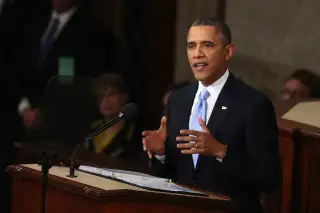No 401(k)? Try Treasury's MyRA as a Starter Roth IRA

Annual open-enrollment season is upon millions of workers, and a third of those in the private sector are finding out again that they have no employer-sponsored savings plan. That means they must save on their own.
One popular choice for tax-free growth of retirement savings is a Roth IRA. Another option that new savers should also know about, if they don’t already, is a myRA.
The myRA is technically a type of Roth IRA so both are subject to the same contribution and eligibility limits. In both cases you can at any time take out the amount you have contributed without penalty. But in other ways they are worlds apart.
You are probably more familiar with the basic Roth, where you open an account with a financial firm and make after-tax contributions that grow tax-free. The money typically is invested in a mix of stocks, bonds and cash, usually through mutual funds. You typically pay some fees, such as the ongoing expense charges built into funds. Firms often specify a minimum initial investment.
A myRA is essentially a starter kit for Roth investing. The federal government runs the program, which was announced by President Obama in his January 2014 State of the Union address. Sign up at myRA.gov. There are no fees and no investment minimums, and what really makes the myRA different—there are no investment risks. Your money is invested in a secure government-backed savings bond now paying annual interest of about 2%.
You may fund the myRA with automatic deposits from a bank account, direct deposit from your employer, or even by marking your tax return to earmark part of your tax refund for the myRA account.
Unlike a Roth from a financial firm, the myRA is not meant to be a long-term retirement savings solution. Once your balance reaches $15,000, or 30 years have passed, you must roll your money over to a standard Roth. And the low rate of return, which may not keep pace with inflation, means you will never amass significant savings in this account.
Read next: 5 Essential Retirement Moves for Couples in Their 20s and 30s
So why bother with a myRA? You shouldn’t—if you already have the discipline to save regularly and are comfortable with the near-term risks and long-term advantages of stock and bond funds. Max out your 401(k) plan if you have access to one, or contribute at least enough to get the entire company match. If you don't have a 401(k), just get started in a standard Roth right away.
But if saving is new to you, and you worry about the markets, and you have very small amounts to get started, a myRA may be your best bet. You will establish a habit of saving and enjoy watching your retirement assets grow. In time, you will want to see your money grow faster and you will hopefully understand that riskier assets over the long term pay more and, in a long-term context, really aren’t all that risky.